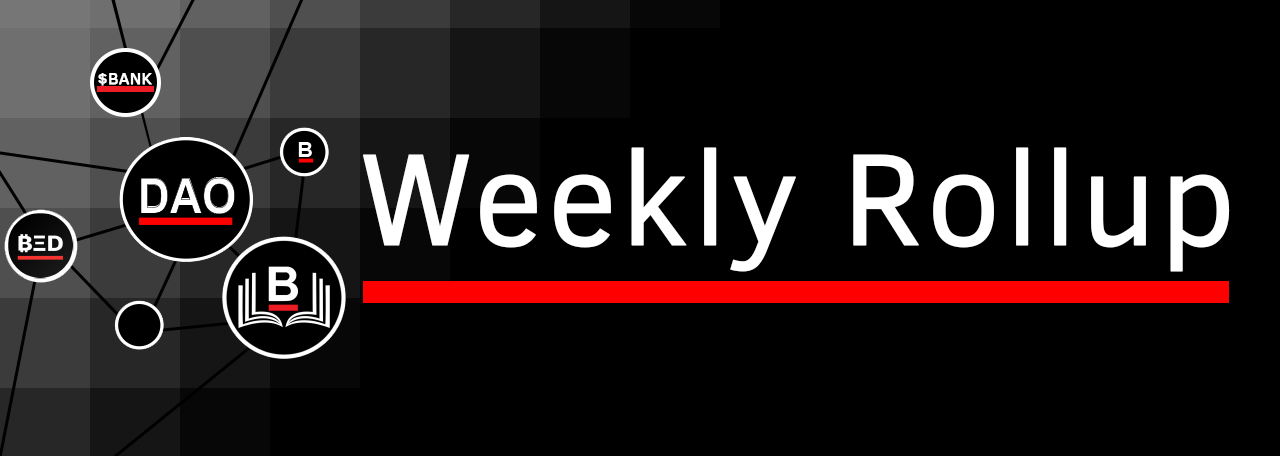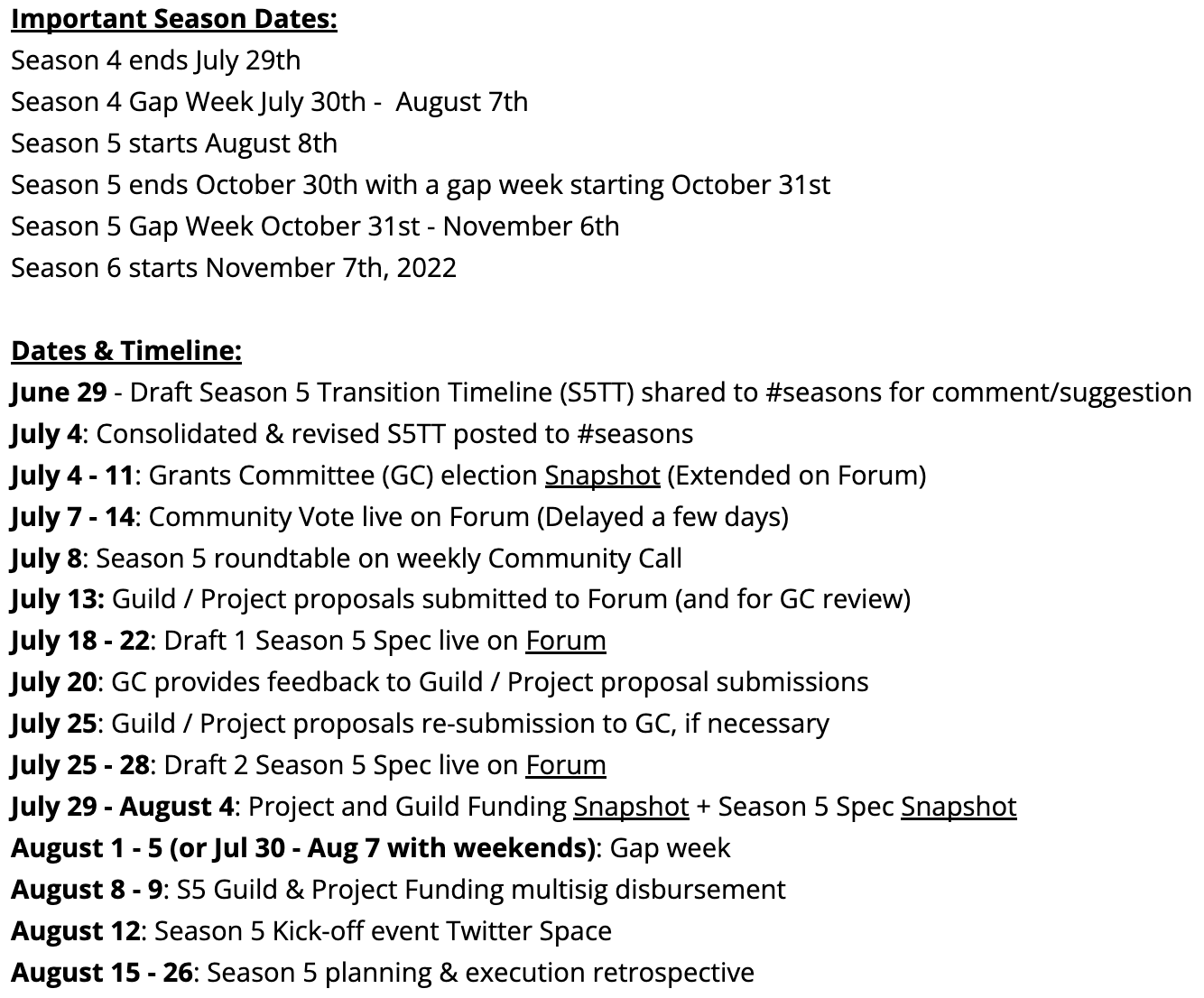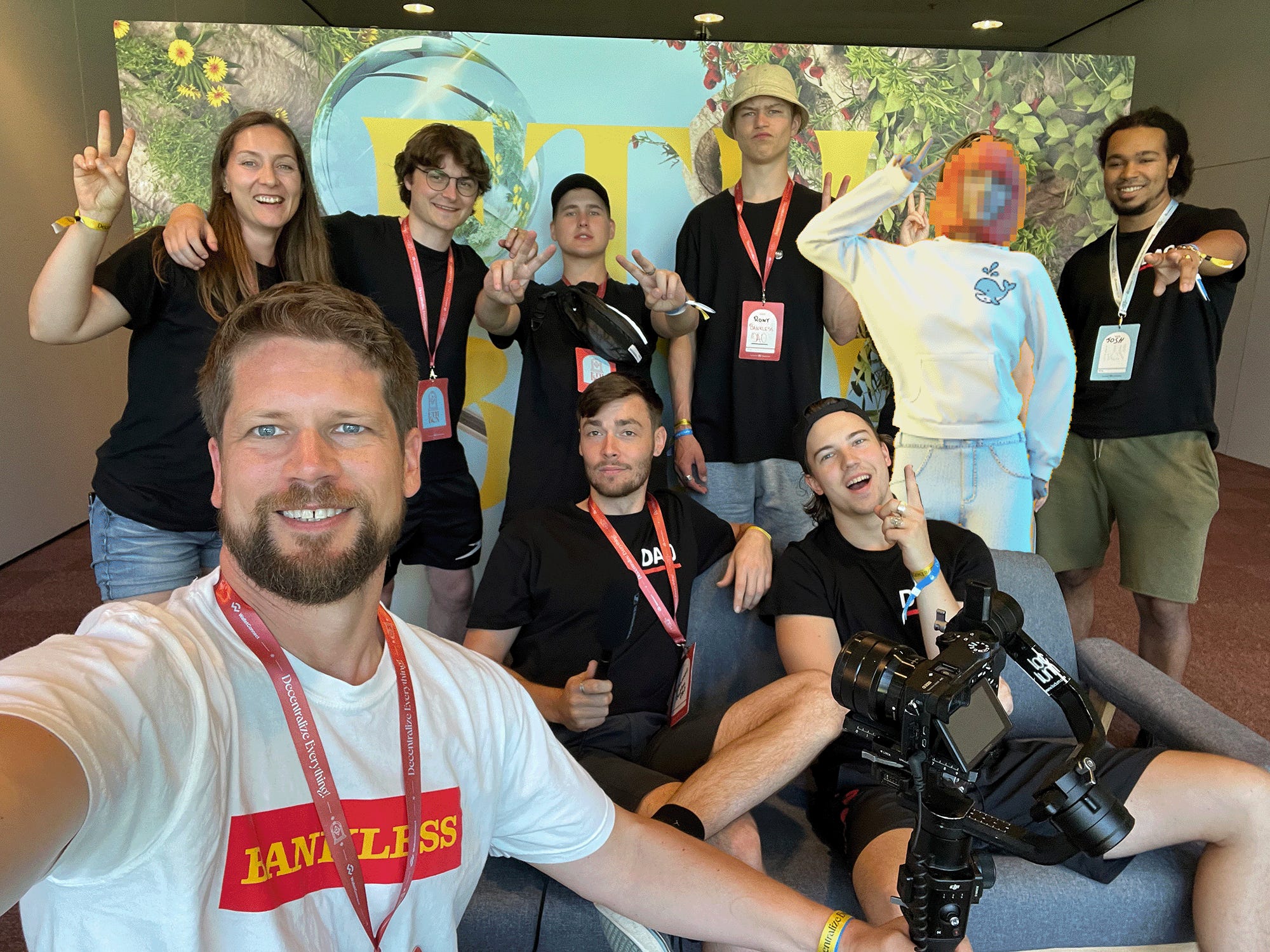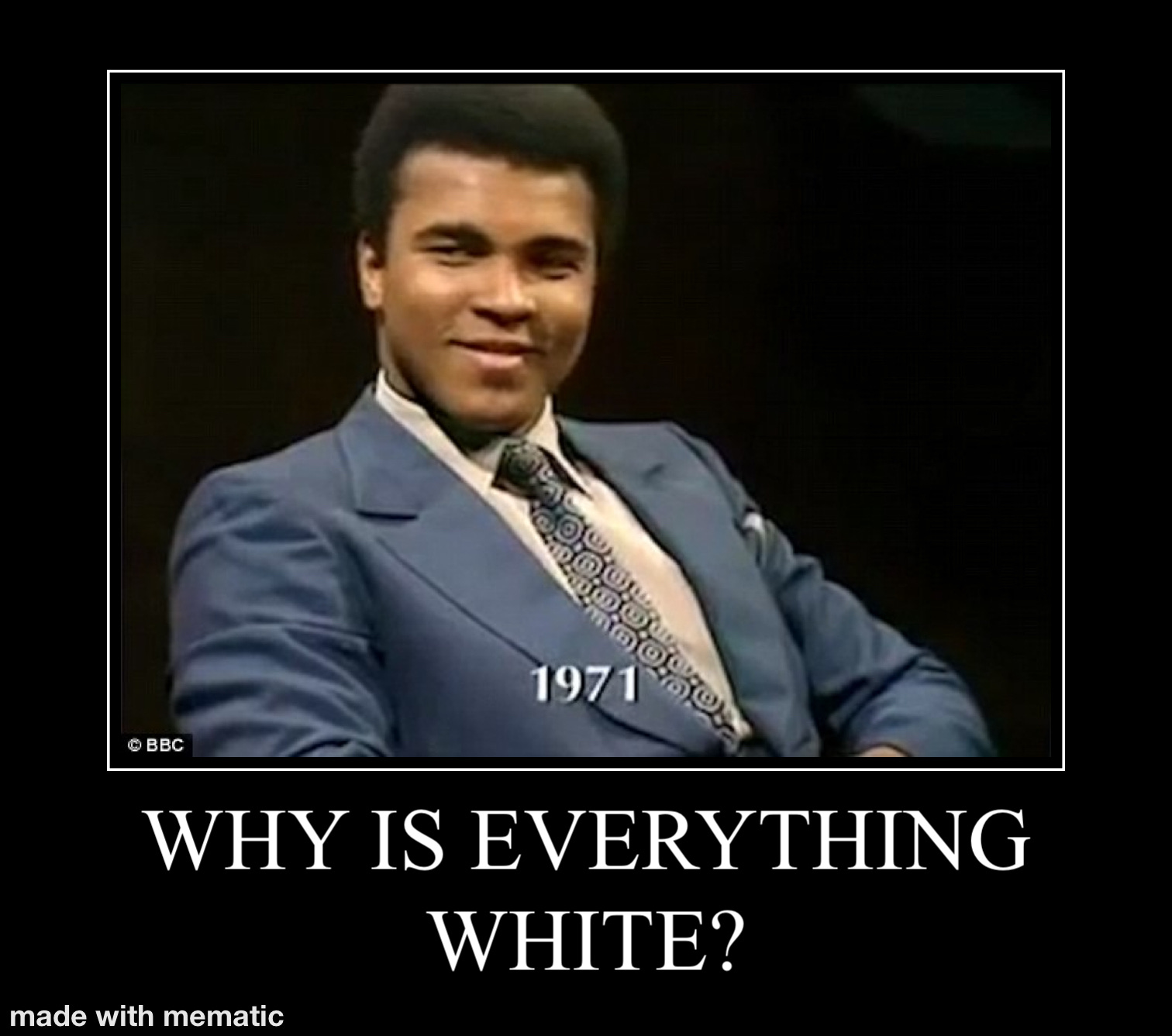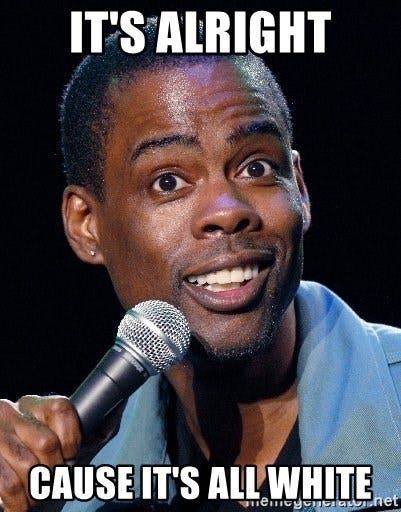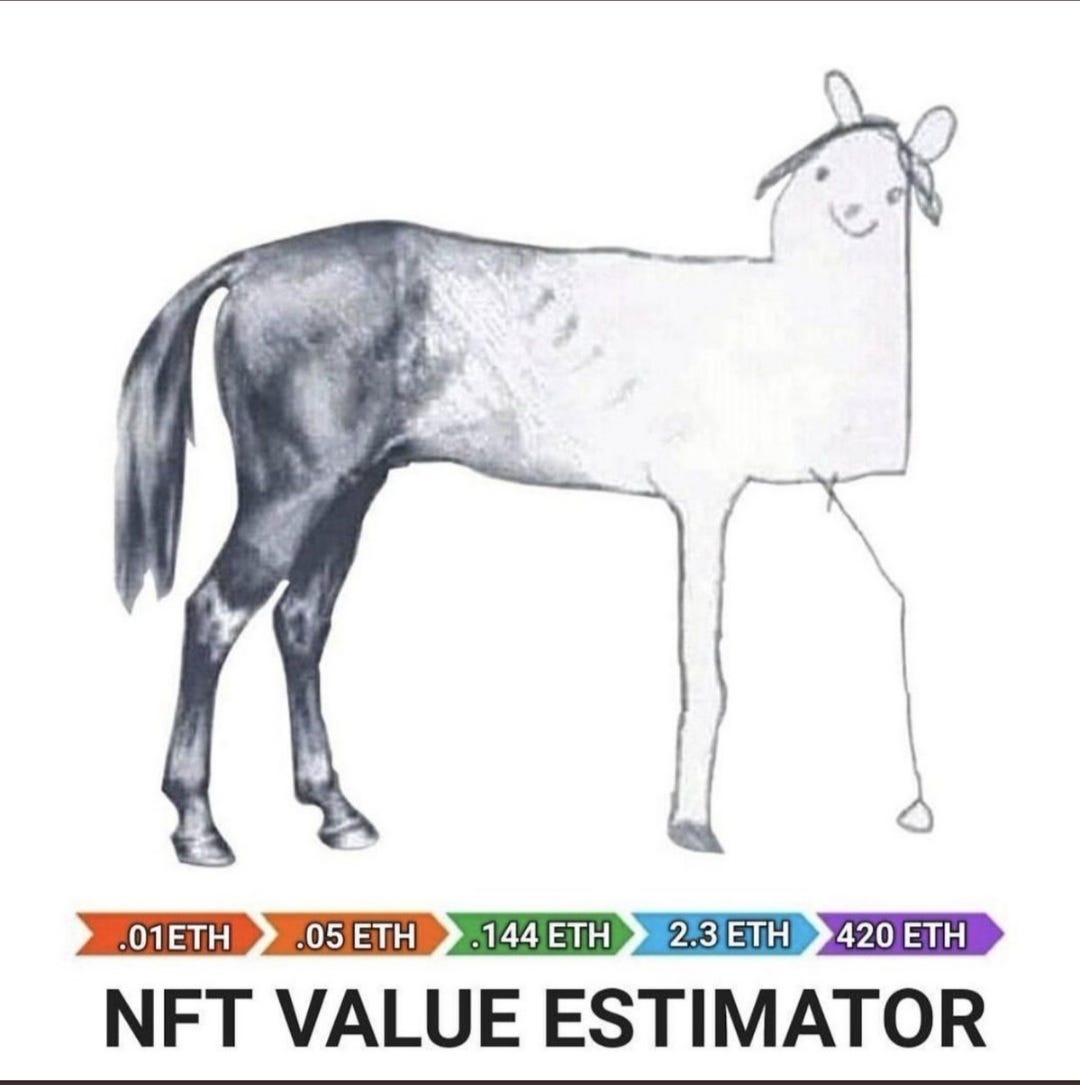Not as Simple as Black and White | BanklessDAO Weekly Rollup
Not as Simple as Black and White | BanklessDAO Weekly RollupCatch Up With What Happened This Week in BanklessDAODear Bankless Nation 🏴, We are at it again! The buzz, the energy, and the enthusiasm are palpable. The season that kicked off with the DAO’s one-year celebration is quickly coming to an end. What an eventful season we have had thus far. Season 5 budget planning is in full swing; we have seen many guilds and projects post their proposals to the BanklessDAO Forum. The Community Vote will be live on the Forum soon; stay tuned to have your 2 BANK’s worth. The Grants Committee has an opening for three members, as they are looking for bright minds to help assess funding proposals. Read the details and submissions on the Forum and think about who you will vote for, or nominate yourself! The BanklessDAO Ombuds Office is a confidential and informal dispute resolution mechanism that supports our social layer. There is an opening for five members who will form the Ombuds Office; the duration for the office is one year and it starts September 1, 2022. Bankless Card is going strong. At the ETHBarcelona event we have seen many people show interest in this product. ETHPrague was also a success for the DAO, and there is video content on YouTube to prove it. Our involvement in global conference events is shaping up to be an endeavor of great value. Speaking of culture, it is the right and responsibility of every member of the DAO to participate in governance. The Community Handbook is on the Forum and requires a vote to move forward. This sets a baseline for our GSE team to revise and refine the Community Handbook. Let’s hop in there and make sure it represents the current state of governance. (No really, do it!) Where do culture and governance collide? One important aspect is the language we choose to represent ourselves. This week’s amazing editorial written by Ap0ll0517 helps us understand the intersections between black and white and the power of choosing our words wisely. Contributors: HAshBrown27, Paulito, WinVerse, Ap0ll0517, Trewkat, siddhearta, hirokennelly.eth, Dippudo This is the official newsletter of BanklessDAO. To unsubscribe, edit your settings. 🗓 Weekly RecapCommunity Highlights🚀 Season 5 Transition TimelineNOTE: The GC election and Community Vote dates are pushed back slightly. For more information, visit the #🍃seasons channel. ☀️ Fun in the Sun at ETHBarcelonaNo comment required! 🌿 BanklessDAO L1s+ Can Claim Their Lens HandleIf you held at least 35K BANK on July 5, 2022 then it's your lucky day because you’re now eligible for Lens Protocol. You can claim a Lens Handle by following the Twitter link:   When you’re set up, come and join the bDAO community on lenster! What’s New🎙 BanklessDAO Podcasts🧠 Crypto Sapiens Podcast 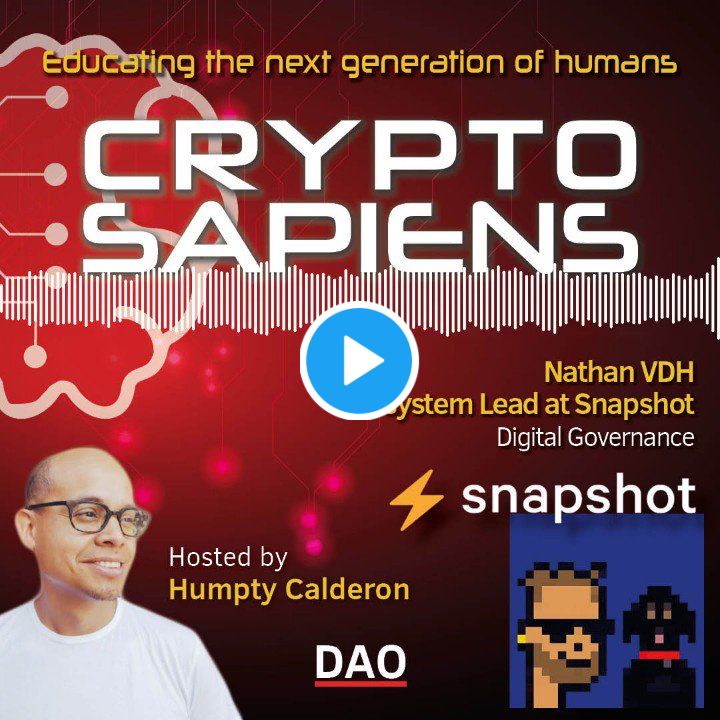   🌍 BanklessAfrica 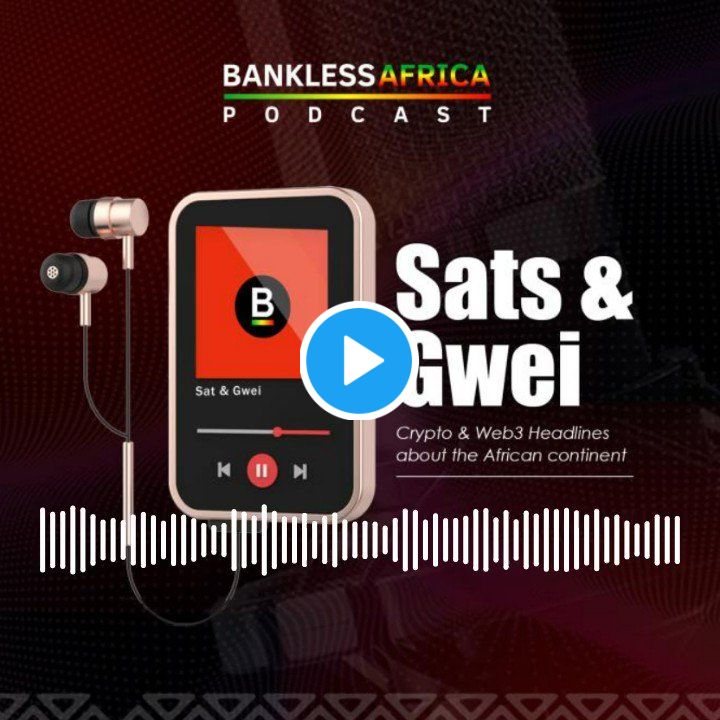 💰 Making Bank 🏹 Bounty Hunter 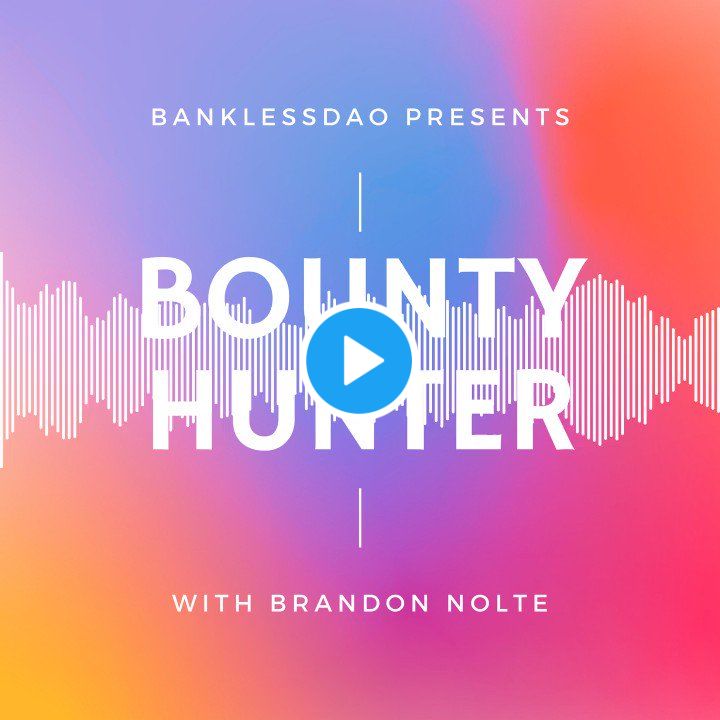 ✍️ Bankless Publishing    🌏 BanklessAfrica Newsletter 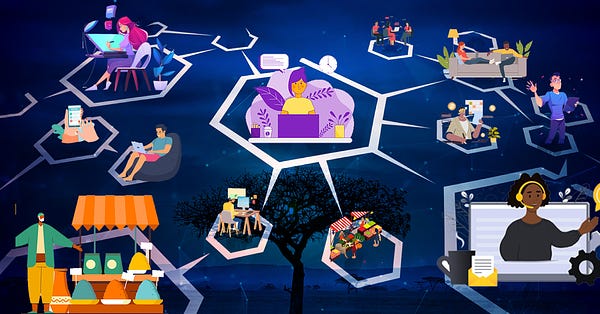 Get Involved🎉 July Coordinape Epoch Is LiveThis allocation round will run from Friday, July 8 to Wednesday, July 13. Please make sure to allocate your GIVE to those who have contributed to the DAO in general, or assisted you in one project or another. Take the time to write a comment too; you could make somebody’s day with some positive words of encouragement. If you want to learn more about Coordinape and how it works, watch these awesome tutorials created by AV Guild. 💡 #WeAreDAO 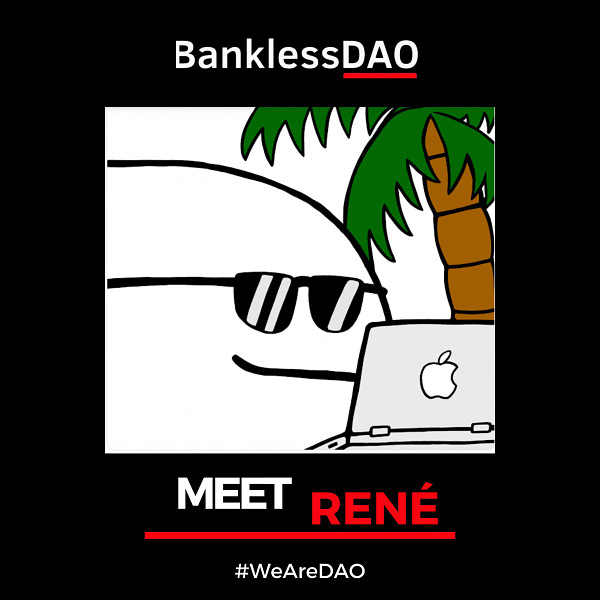 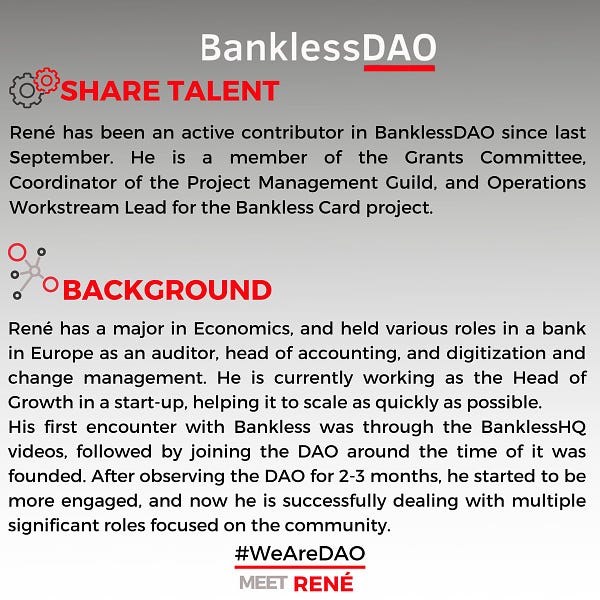 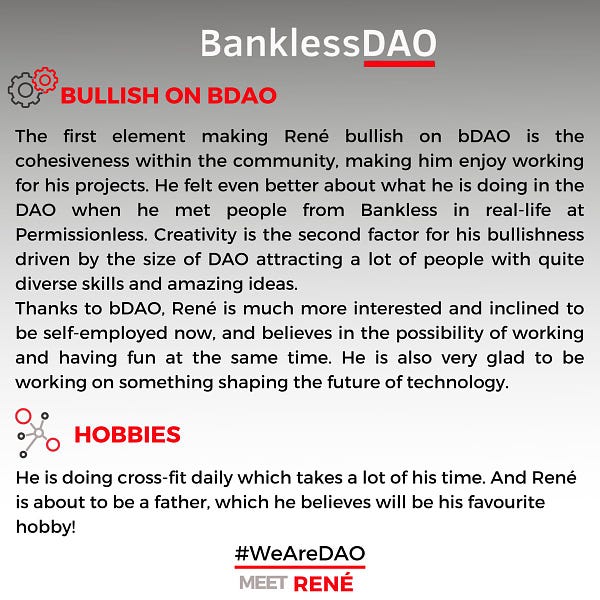 Not as Simple as Black and WhiteAuthor: Ap0ll0517 In 1971, Muhammed Ali gave a riveting performance in a BBC interview when he asked: “Why is everything white?” In his monologue, he expressed the many facets of our culture which are dominated by — for lack of a better term — whiteness. Although his words drew laughter from the crowd and the host, he exposed a deeply rooted issue plaguing our society. Our language, customs, and even food options are dominated by a culture that is pro-white. As controversial as this may be, his message is just as true and relevant today as it was 50 years ago. It’s no secret that the Web3 space lacks diversity. One recent poll of 2200 respondents, conducted by Morning Consult in December 2021, revealed that 70% of those owning crypto are men, although men only make up 48% of the U.S. adult population. Additionally, 62% of the surveyed crypto users identified as White, with 24% Hispanic, 8% Black, and 6% Asian or other ethnicity. That is almost a 2:1 ratio of white users to everyone else and almost 8:1 ratio of white users to black users! Although there are efforts to reverse this trend, the fact remains — Web3 is predominately white. I’m not only referring to the complexion of users, but also the language and jargon we use in the space. For example, let’s review the term ‘white paper’. In Web3 this refers to a document which gives potential investors and users technical information about a crypto project, its roadmap, and plans for success. I’ll be honest, this term confuses me. Why include the word white? What purpose does it serve? Does it add anything to the definition or description of the term? If so, what does it add? I don’t think it adds anything to the definition or describes the term. It’s completely unnecessary. In fact, the term white paper originates from a color-coded government system for indicating access levels, which included green papers and even pink papers. However, there is no need for such systems in Web3, so why do we continue to use that term? Another commonly used term in the Web3 space is ‘whitelist’. Everyone wants to be whitelisted! Why? Because this word refers to a list of registered participants who have preferential access. Again, I pose the questions: why include the word white in this term? Does it add anything to the definition or description? If so, what does it add? Unlike the term white paper, which no longer has a purpose for including the word white, the term whitelist does have such a purpose. I think the word white in this term refers to preferential treatment or access. If a user is on a blacklist, they are intentionally excluded. They don’t receive special access or privileges. That’s because the term blacklist refers to a list of persons who are disapproved of or are to be punished or boycotted. One more example is a white hat hacker. Many projects offer bounties to a person who can use their skills to improve security by exposing vulnerabilities before malicious hackers can detect and exploit them. Can you guess what a malicious hacker is called? I’ll give you one guess. That’s right, a black hat hacker! It was this very pair of terms, white hat hacker and black hat hacker, which prompted this editorial. In Issue #209 of Good Morning News, “Bug Swat,” my good friend hirokennelly reported that Aurora Labs paid a $6 million reward to a hacker who prevented he theft of 70,000 ETH. In his article, he wrote: “white hatters find the loopholes before their evil twin.” This small clause really bothered me. I realized it was more than the words that troubled me. It was the underlying, embedded, ethos of how we use these words — to distinguish good from evil. I can’t help but see the inherent qualities attributed to black and white. They look like two simple words. At face value, they describe something either void of light or void of color. However, inherent in these two words is something else entirely. Historically, black is reserved for describing something vile, malicious, corrupted, depraved, and wicked. Conversely, white has been historically associated with favor, esteem, trustworthiness, credibility, and honesty. One last illustration of this pattern: white lies and black lies. A white lie is supposedly innocent compared to the black lie, which is intentionally hurtful. This reminds me of the Chris Rock special, “Never Scared,” when he said, “It’s alright cause it’s all white.” I could go on but I think you get the picture. The fact of the matter is that we don’t have to continue using inflammatory language. There are already organizations which have taken the necessary steps to ensure the language they use is inclusive and not pejorative. In April 2020, the National Cyber Security Center (NCSC) decided to update its website to replace divisive words with more diverse language. The NCSC swapped ‘whitelist’ for ‘allow list’. They also committed to using the term ‘deny list’ instead of ‘blacklist’. Later that same year, GitHub also joined the list of projects and companies supporting the removal of language which could be offensive to the black community. By replacing terms like ‘master’ and ‘slave’, GitHub acknowledged that continued use of racially charged language could prolong racial stereotypes. This small change has a significant effect. The descriptions are more clearly defined and less ambiguous. They’re also less disparaging. By replacing the words black and white, they are no longer subscribing to the notion that white is something we should desire and black is something we should turn away from. I only wish more people and organizations acknowledged that same approach and publicly pledged to embrace inclusive language.
In 2021, The American Psychological Association (APA) published “Equity, Diversity, and Inclusion: Inclusive Language Guidelines.” According to the foreword, “APA is systematically and institutionally examining, acknowledging, and charting a path forward to address its role in racism and other forms of destructive social hierarchies … This requires avoiding language that perpetuates harm or offense toward members of marginalized communities through our communications.” I highly encourage everyone to read the guidelines presented in this document. Not only do the guidelines raise awareness of culturally sensitive phrases and terms, the origins are also explained. According to the APA document, race is defined as, “The social construction and categorization of people based on perceived shared physical traits that result in the maintenance of a sociopolitical hierarchy.” Simply put, people are grouped together based on their appearances. The most popular measuring stick to determine one’s race is skin color. All too commonly, a general umbrella term, such as black or white, is used to classify people of varying cultures and ethnicities. From race, comes race-based trauma, which is “A form of race-based stress, referring to people of color and Indigenous individuals’ reactions to dangerous events and real or perceived experiences of racial discrimination.” This refers to the psychological effects from a person's experiences with bigotry, intolerance, and prejudice. Most times, these encounters of discrimination are derived from some form of deeply seated racism. The APA defines racism as “A system of structuring opportunity and assigning value based on phenotypic properties (e.g. skin color and hair texture associated with “race” in the United States).” It goes on to say racism is also expounded upon and organized into more specific examples and causes, such as structural, institutional, interpersonal, and internalized racism. I won’t describe or elucidate all the specific forms of racism, but I will elaborate on one of the four. Internalized racism refers to “the acceptance by diverse racial populations of the negative societal beliefs and stereotypes about themselves — including negative stereotypes and beliefs about complexion and color (i.e. colorism) that reinforce the superiority of Whites and can lead to the perception of themselves as devalued, worthless, and powerless.” In my opinion, this form of racism is the worst form because the notion of inferiority doesn’t come from an external source. Outside bias is harmful by itself, but when coupled with internal bias, it becomes deadly. It impacts the person’s mental health, self-esteem, and sense of self-worth. It causes increased anxiety and ultimately contributes to race-based trauma. This is just one example of systemic racism that still exists today. Subtle nuances of our language conserve centuries of practices and policies which suggest white is preferable to black. As an African American man, often described as black, I can attest to experiencing internalized racism. When I reflect on potential causes of this symptom, I believe it has a lot to do with our use of language. When we compare other instances where black is used as an adjective, we can see that they’re usually unpleasant references and definitions. As an African American, I have had many unpleasant experiences simply because I was black. I’ve been viewed as a threat and a menace. I’ve been over-policed and under-protected. My experience is no anomaly, as many black people have faced this reality. Discrimination is very real, and I believe we continue to perpetuate this vicious cycle everyday, simply by using black and white as adjectives in our language. All the negative associations with the word black, accompanied by my personal experiences, have directly impacted my very own opinion of what it means to be black. I can admit that I unconsciously use the association method with the words black and white. I know I’m not alone. Everyone reading this has displayed some sort of bias, whether consciously or unconsciously, when it comes to using language. The APA also recognizes this dynamic in our culture. “The ideological belief that biological and cultural Whiteness is superior, as well as normal and healthy, is a pervasive ideology that continues to polarize the United States and undergird racism,” is defined as white supremacy. I posed this concern in the BanklessDAO #writer-general channel a few weeks ago. I was hesitant to bring this topic up for fear of backlash or offending some of my DAO mates as I expressed my beliefs concerning our use of language. I shared with my fellow writers that we’re conditioned to associate specific character traits with these two words and this permeates our culture. Good is associated with white and bad is associated with black. The feedback I received was amazing! The ensuing conversation put my fears to rest. The open dialogue was refreshing and sincerely compassionate. Writers like hirokennelley.eth, HAshBrown27, anointingthompson1, Trewkat, links, and nonsensetwice.eth applauded me for bringing this topic up for discussion. Not only did they thank me for my insight, they encouraged me to write this editorial to spread awareness. But is it enough just to discuss this topic and bring awareness? What good are we doing if we only recognize something but take no action to change it? Don’t we have a responsibility to make changes that will directly benefit and impact our descendants and successors? So I asked my fellow writers if we could use different terminology in our lingo. Who says we have to continue using this polarizing jargon?
Words matter. They can hurt, heal, empower, and destroy. I firmly believe that if we can learn to use more inclusive language, we will improve our efficiency in communication and build a better, more diverse community. It starts with us. We need to make the decision to make a change and have the conviction to follow through with action! 🎣 Phishing SchoolAuthors: d0wnlore and the InfoSec Team Harvest Now, Decrypt Later: Why You Should Protect Your Encrypted DataWhen dealing with the potential of data theft, most of us concern ourselves with immediate threats and dangers — the theft of data that is unencrypted (plain text) or weakly encrypted (using compromised private keys or weak algorithms). But as the technologies available to us, and our adversaries, become more efficient, and as vulnerabilities are discovered in the software and algorithms we use, even the risk of exposing encrypted data to other parties we don’t trust should become more of a concern. Whether it’s through post-quantum cryptography or vulnerabilities discovered in the cryptographic libraries used to secure your data, your encrypted data may no longer provide the protection you expect. Here are three ideas you can use to think more critically about your encrypted data while it’s in transit or at rest. 1. Who or what is looking at traffic on your network? If you are on a shared network such as a café or conference Wi-Fi, there may not only be humans collecting network traffic, but also devices installed to collect all the data. This data collection isn’t always trivial to execute. But the key idea is that once a malicious actor does have your encrypted data, then it may be only a matter of time before they can decrypt it. What kind of data are you passing through open, untrusted networks that you’d rather not have others see? 2. Can you trust your cloud data-hosting provider, such as Google Drive or Dropbox, with encrypted archives and other files you leave on there? Do they make it clear through their policies that they do not retain data once you choose to delete it from their servers? While you may trust certain, well-known providers with this data, can you trust others that may retain your data long enough that they can eventually break the encryption and possibly use your data nefariously? 3. Are you are a software developer, or want to scrutinize the software you use? Consider that software is being sent to you encrypted but in a way that may be exposed to other parties or in side-channels. If you use a web app, is sensitive-yet-encrypted data being used in URLs or cookies, which may be exposed in your browser history or third party scripts used by the web app? Can you trust that your machine isn’t compromised, which could lead to such data being sent to a malicious actor? What about the third parties that have hooked into the web app with those scripts and possibly transmit that encrypted data through more providers? 🏛 GovernanceProposals in Discussion💡 An Idea to Improve Coordinape [DRAFT 2]The intention of this proposal is to make Coordinape easier and more effective in rewarding contributors. No matter what your level of contribution, your thoughts on this subject are welcome. 🌈 Proposing the Idea of Term Limits for Role HoldersAs we get ready for Season 5, most guilds across the DAO are going through role holder elections. The author proposes a discussion on the benefits or drawbacks of term limits for role holders across the DAO. ⚙️ Mad Hatter MGMT Season 4 ProposalOnce upon a time, the original intent of the DEGEN Workgroup was to develop “one bot to rule them all” to assist in all matters pertaining to the administration of the BanklessDAO Discord Server. However, upon development of the POAP distribution feature, DEGEN became specifically about POAP, and the bDAO server-specific features were split off into the Mad Hatter Discord bot, with development waning. Since then the DEGEN Workgroup has relinquished custody of Mad Hatter, which now requires a team to assist in its maintenance, feature support and education, and continued development. 📣 BanklessDAO Ombuds - Selection of New MembersThe Ombuds Office is an informal, impartial, neutral, and confidential place for community members to address concerns, abuse, dysfunctions, shortfalls, delays, and violations that may arise while participating in the DAO. At the request of any DAO member, the Ombuds Office can hear the involved members and suggest resolutions between them. The Ombuds team listens and makes non-binding recommendations for structural solutions. If you are interested in becoming a member of the BanklessDAO Ombuds, please reply to this post and present yourself to the community. ✅ Action Items📖 Action: Allocate GIVE as July Coordinape is now live! 👥 Nominate yourself for a role on Grants Committee or the Ombuds Office. 🏃♀️ Catch up: Review this week's Community Call notes or listen to the recording.
🤣 Meme of the WeekThanks EthHunter! If you liked this post from BanklessDAO, why not share it? |
Older messages
The Lending Edition | DeFi Download
Thursday, July 7, 2022
Your Trusted Source for 101s, Project Announcements, and Tokenomics Tutorials.
Facebook NFTs, Arc8 Mobile Money, and Chrono Glasses From Year 2352 | Decentralized Arts
Wednesday, July 6, 2022
BanklessDAO Weekly NFT and Cryptoart Newsletter
Building Season With Making Bank | BanklessDAO Weekly Rollup
Saturday, July 2, 2022
Catch Up With What Happened This Week in BanklessDAO
Non-Fungible Tokens | Decentralized Law
Friday, July 1, 2022
A Monthly Journal Covering the Crypto-Legal Space
DAOs Get in the Golden State of Mind
Thursday, June 30, 2022
You're reading State of the DAOs, the high-signal low-noise newsletter for understanding DAOs.
You Might Also Like
Crypto traders lose nearly $1 billion as US-China trade war overshadows Trump’s crypto reserve initiative
Tuesday, March 4, 2025
US trade tensions with China and allies spark $500 billion crypto market plunge despite Trump's crypto reserve plan. ͏ ͏ ͏ ͏ ͏ ͏ ͏ ͏ ͏ ͏ ͏ ͏ ͏ ͏ ͏ ͏ ͏ ͏ ͏ ͏ ͏ ͏ ͏ ͏ ͏ ͏ ͏ ͏ ͏ ͏ ͏ ͏ ͏ ͏ ͏ ͏ ͏ ͏ ͏ ͏
Analyst Spotlight Solana Overview
Tuesday, March 4, 2025
An in-depth look at Solana (SOL) and this week's market developments ͏ ͏ ͏ ͏ ͏ ͏ ͏ ͏ ͏ ͏ ͏ ͏ ͏ ͏ ͏ ͏ ͏ ͏ ͏ ͏ ͏ ͏ ͏ ͏ ͏ ͏ ͏ ͏ ͏ ͏ ͏ ͏ ͏ ͏ ͏ ͏ ͏ ͏ ͏ ͏ ͏ ͏ ͏ ͏ ͏ ͏ ͏ ͏ ͏ ͏ ͏ ͏ ͏ ͏ ͏ ͏ ͏ ͏ ͏ ͏ ͏ ͏ ͏ ͏
ETH Denver Conference Impressions: VC Indifference, Lackluster Narratives, and the Disillusionment of Idealism
Tuesday, March 4, 2025
Compared to last year — and even more so than the recently concluded Consensus — the overall atmosphere was much more subdued, with panel speakers noticeably outnumbering the audience. ͏ ͏ ͏ ͏ ͏ ͏ ͏ ͏
Trump’s crypto reserve faces backlash over ADA and XRP inclusion
Monday, March 3, 2025
Ripple and Cardano leaders embrace Trump's multichain approach despite criticism for altcoin inclusion. ͏ ͏ ͏ ͏ ͏ ͏ ͏ ͏ ͏ ͏ ͏ ͏ ͏ ͏ ͏ ͏ ͏ ͏ ͏ ͏ ͏ ͏ ͏ ͏ ͏ ͏ ͏ ͏ ͏ ͏ ͏ ͏ ͏ ͏ ͏ ͏ ͏ ͏ ͏ ͏ ͏ ͏ ͏ ͏ ͏ ͏ ͏
📈 Bitcoin dominance reached a 4-year high of 62%; Trump announced a strategic crypto reserve with BTC, ETH, XRP, …
Monday, March 3, 2025
Bitcoin dominance reached a 4-year high of 62%; Cronos becomes the first blockchain to power crypto-to-debit transfers; Trump announced a strategic crypto reserve with BTC, ETH, XRP, SOL, and ADA ͏ ͏ ͏
White House Schedules First Ever Crypto Summit
Monday, March 3, 2025
March 3rd, 2025 Sign Up Your Weekly Update On All Things Crypto TL;DR White House Schedules First Ever Crypto Summit SEC Declares Meme Coins Are Not Securities Consensys Secures Victory In MetaMask
VC Monthly Report, February Sees 14% Growth in Funding Amount and Deal Count, Stablecoins and Payments Dominate In…
Monday, March 3, 2025
According to RootData statistics, there were 98 publicly disclosed crypto VC investment projects in February 2025, a 14% increase month-over-month (compared to 86 projects in January 2025) but a 35.1%
Bitcoin’s steep decline fueled by short-term holders
Sunday, March 2, 2025
High-frequency traders and day traders rile Bitcoin market as prices plummet. ͏ ͏ ͏ ͏ ͏ ͏ ͏ ͏ ͏ ͏ ͏ ͏ ͏ ͏ ͏ ͏ ͏ ͏ ͏ ͏ ͏ ͏ ͏ ͏ ͏ ͏ ͏ ͏ ͏ ͏ ͏ ͏ ͏ ͏ ͏ ͏ ͏ ͏ ͏ ͏ ͏ ͏ ͏ ͏ ͏ ͏ ͏ ͏ ͏ ͏ ͏ ͏ ͏ ͏ ͏ ͏ ͏ ͏ ͏ ͏ ͏ ͏
Asia's weekly TOP10 crypto news (Feb 24 to Mar 2)
Sunday, March 2, 2025
According to Coindesk, citing local news outlet Dawn, Pakistan is planning to establish a National Crypto Committee to formulate cryptocurrency policies. ͏ ͏ ͏ ͏ ͏ ͏ ͏ ͏ ͏ ͏ ͏ ͏ ͏ ͏ ͏ ͏ ͏ ͏ ͏ ͏ ͏ ͏ ͏ ͏
On ICOs, NFTs, and Memecoins
Sunday, March 2, 2025
CRYPTODAY 143 ͏ ͏ ͏ ͏ ͏ ͏ ͏ ͏ ͏ ͏ ͏ ͏ ͏ ͏ ͏ ͏ ͏ ͏ ͏ ͏ ͏ ͏ ͏ ͏ ͏ ͏ ͏ ͏ ͏ ͏ ͏ ͏ ͏ ͏ ͏ ͏ ͏ ͏ ͏ ͏ ͏ ͏ ͏ ͏ ͏ ͏ ͏ ͏ ͏ ͏ ͏ ͏ ͏ ͏ ͏ ͏ ͏ ͏ ͏ ͏ ͏ ͏ ͏ ͏ ͏ ͏ ͏ ͏ ͏ ͏ ͏ ͏ ͏ ͏ ͏ ͏ ͏ ͏ ͏ ͏ ͏ ͏ ͏ ͏ ͏ ͏ ͏ ͏ ͏ ͏ ͏ ͏ ͏ ͏
